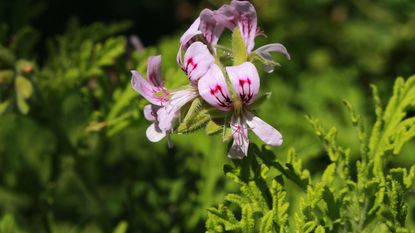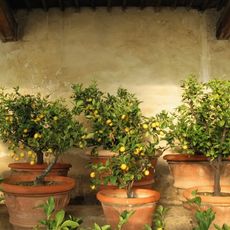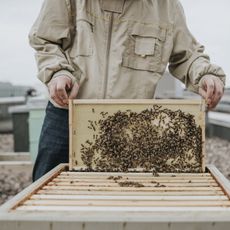Growing Scented Geraniums Successfully


Kelly Orzel is the owner and grower at Bowery Beach Farm in Maine, She specializes in growing scented geraniums and a wide assortment of herbs. She graduated with her MS in Horticulture from Texas Tech University in 2008, is a current Master Gardner and lecturer. Kelly travels throughout New England giving garden talks and demonstrations. For more information on her farm or to purchase some of her over 40 varieties of scented geraniums visit the shop at BoweryBeachFarm.com or email her at kelly@bowerybeachfarm.com.
| Row 0 - Cell 0 | Row 0 - Cell 1 |
Naturally, as your plant grows and becomes larger it will require a bigger pot. This should be one size larger than the current pot as they do like fairly restricted roots. You will most likely need to do this several times during the life of your plant. This is a good time take cuttings and make more scented geraniums. The rooting process takes approximately 6-8 weeks, but once rooted, they make lovely housewarming or holiday gifts! Scented geraniums are frost tender and should only be planted directly outside starting late May through to early October; however, they can be over-wintered indoors as long as they get plenty of bright, natural light. It is essential to assess your frost risk by checking your USDA Hardiness Zone and bring the plants inside at the appropriate time, as it is highly unlikely that they will survive if left outside during winter or very cold months. As house plants, scented geraniums will continue to flower for several months, filling you home with wonderful living, natural fragrances. Simply cut back your plant's foliage by 1/2 to 2/3 inches, dig and pot it up. When it's time to move them back out in to the garden, give them a good prune, repot and feed a couple of weeks beforehand. Acclimate your plants to outside conditions, then plant outside. By then, however, you may love their aromatic scents so much you'll want to keep them inside! Save
Gardening tips, videos, info and more delivered right to your inbox!
Sign up for the Gardening Know How newsletter today and receive a free download of our most popular eBook "How to Grow Delicious Tomatoes."
-
 Want a Backyard Mini Orchard? Create Your Own Container Orchard
Want a Backyard Mini Orchard? Create Your Own Container OrchardEasier to care for in small spaces, a backyard mini-orchard makes sense for busy gardeners and juicy fruit is the reward.
By Teo Spengler
-
 Urban Beekeeping Guide: Top Tips For Raising Bees In The City
Urban Beekeeping Guide: Top Tips For Raising Bees In The CityUrban beekeeping can be a rewarding and appreciated pastime, but first be sure it’s legal in your city and learn the ropes of beekeeping.
By Mary Ellen Ellis